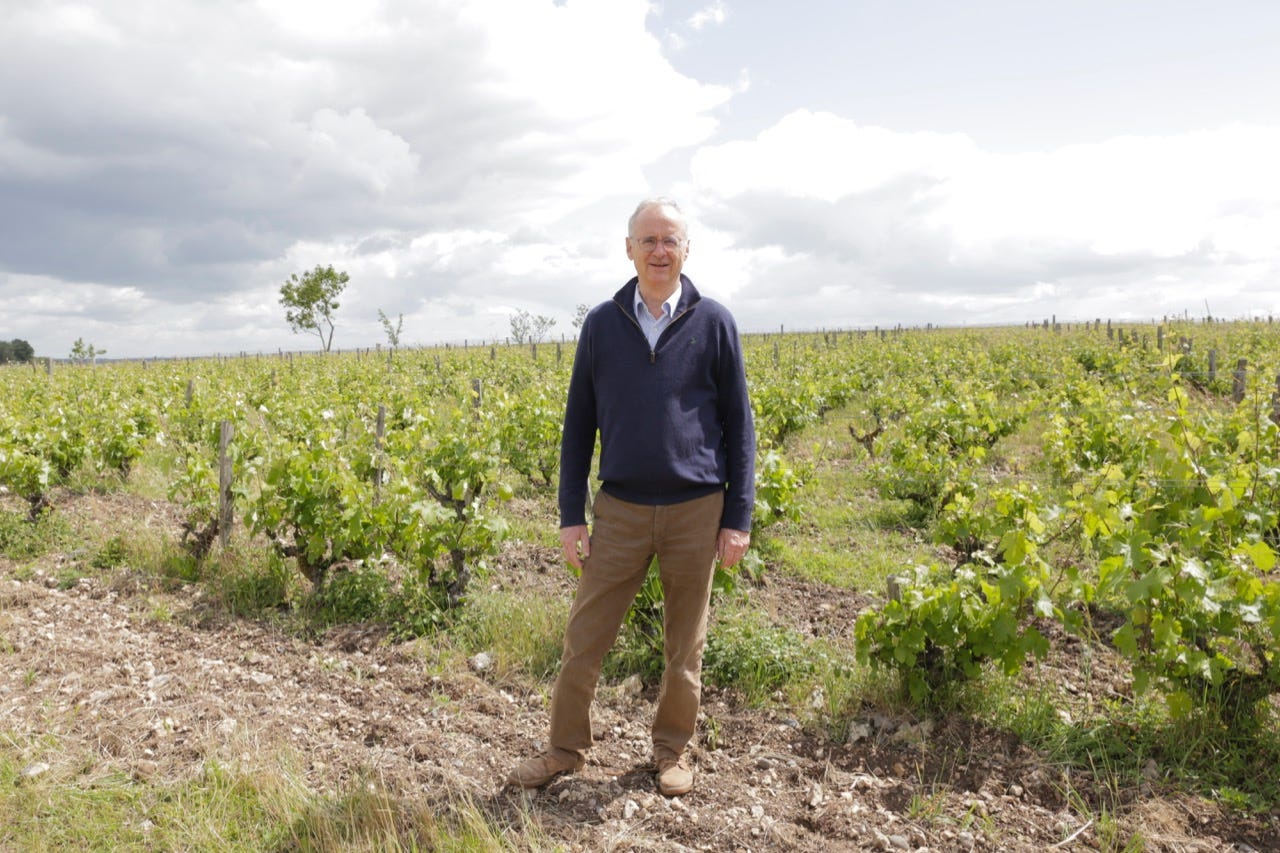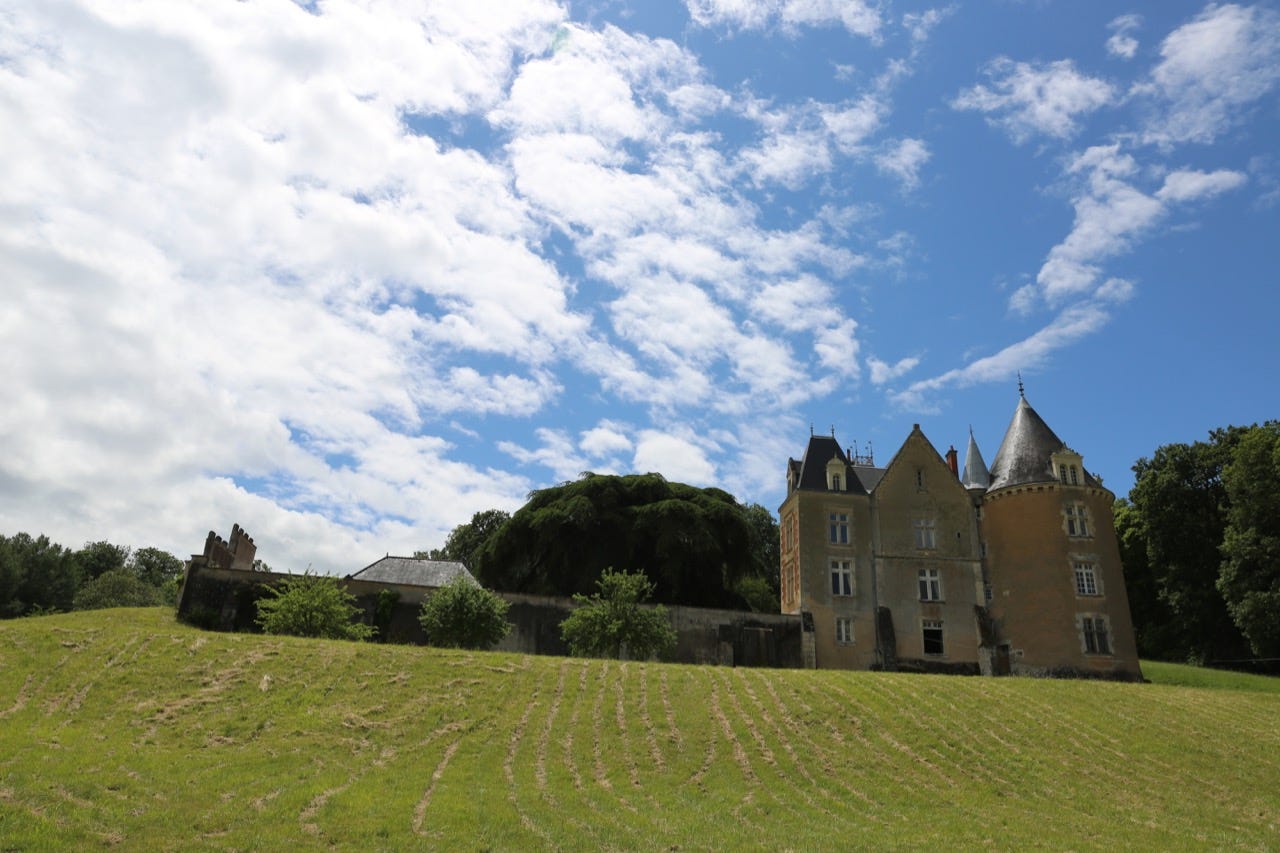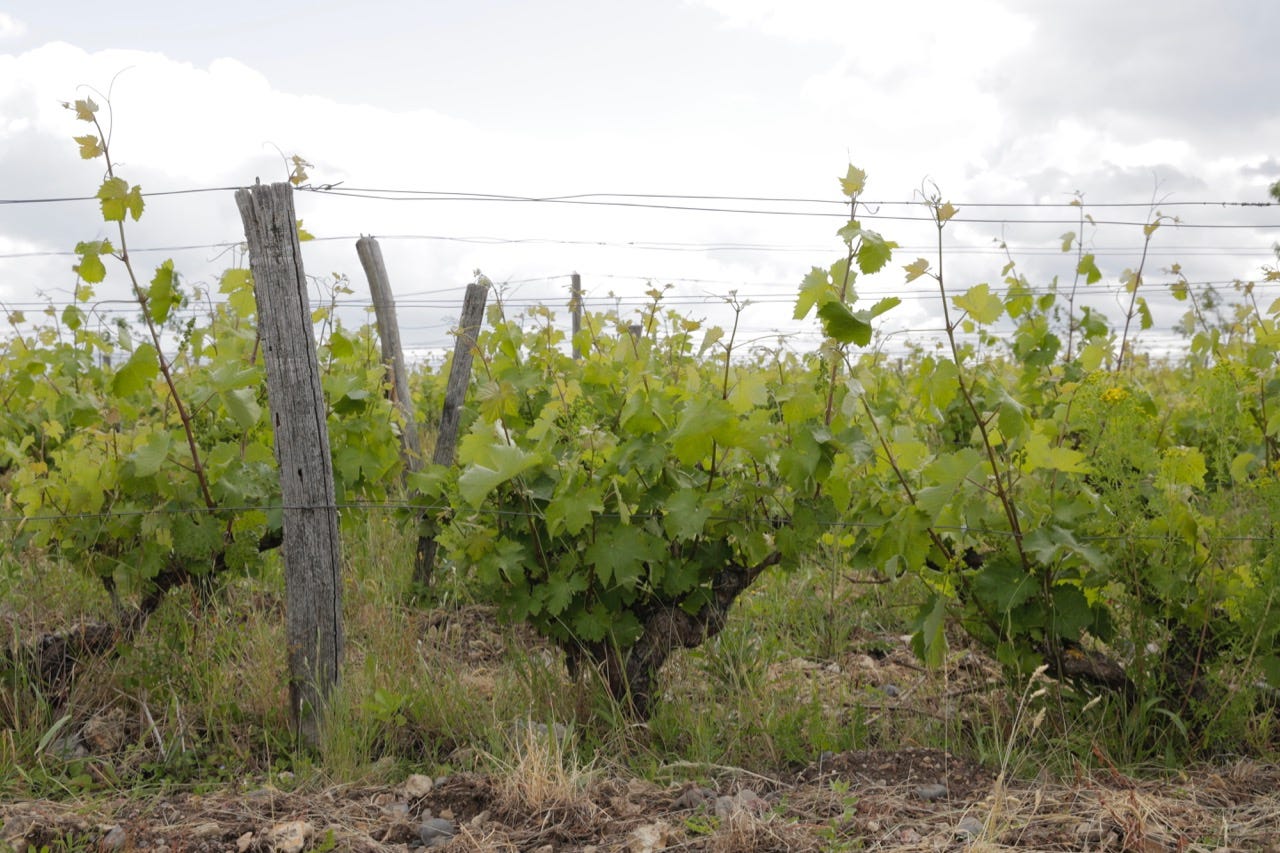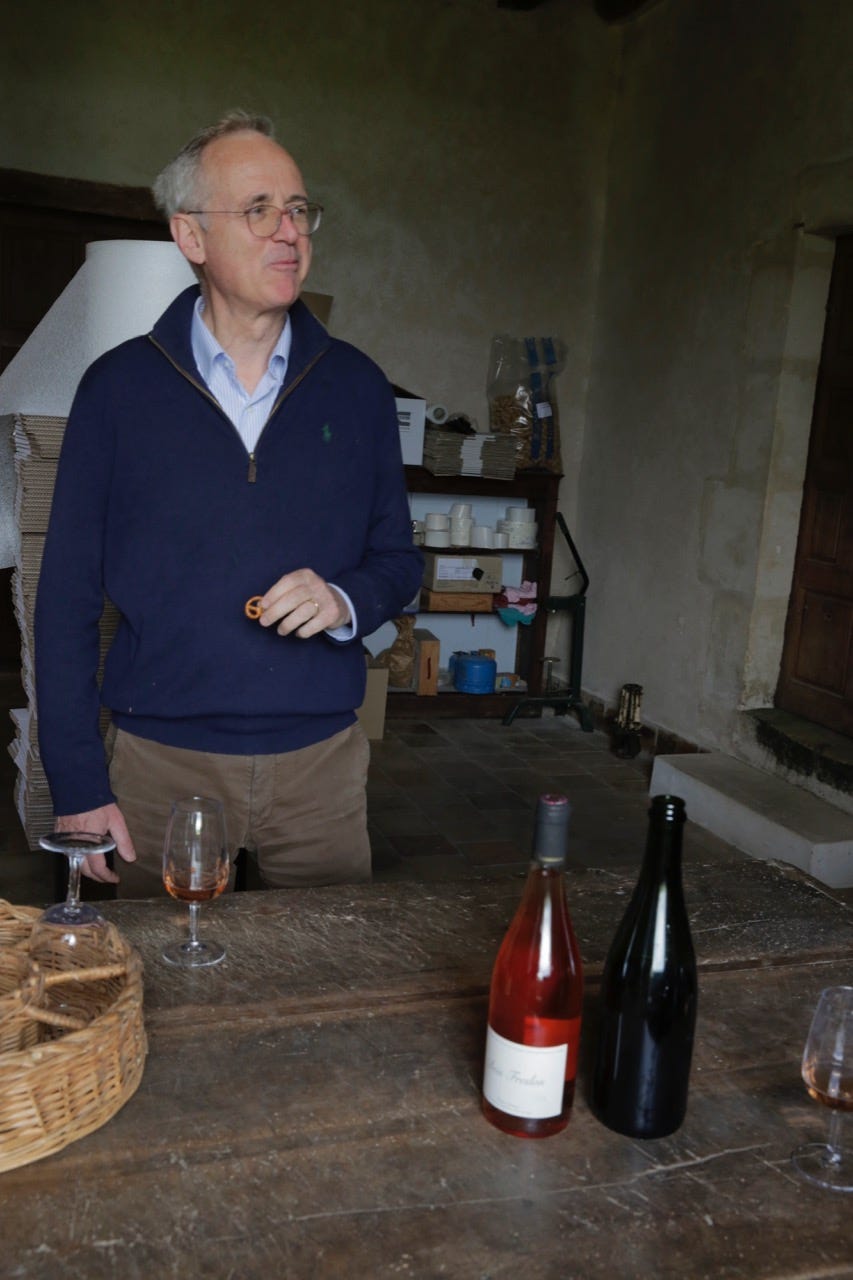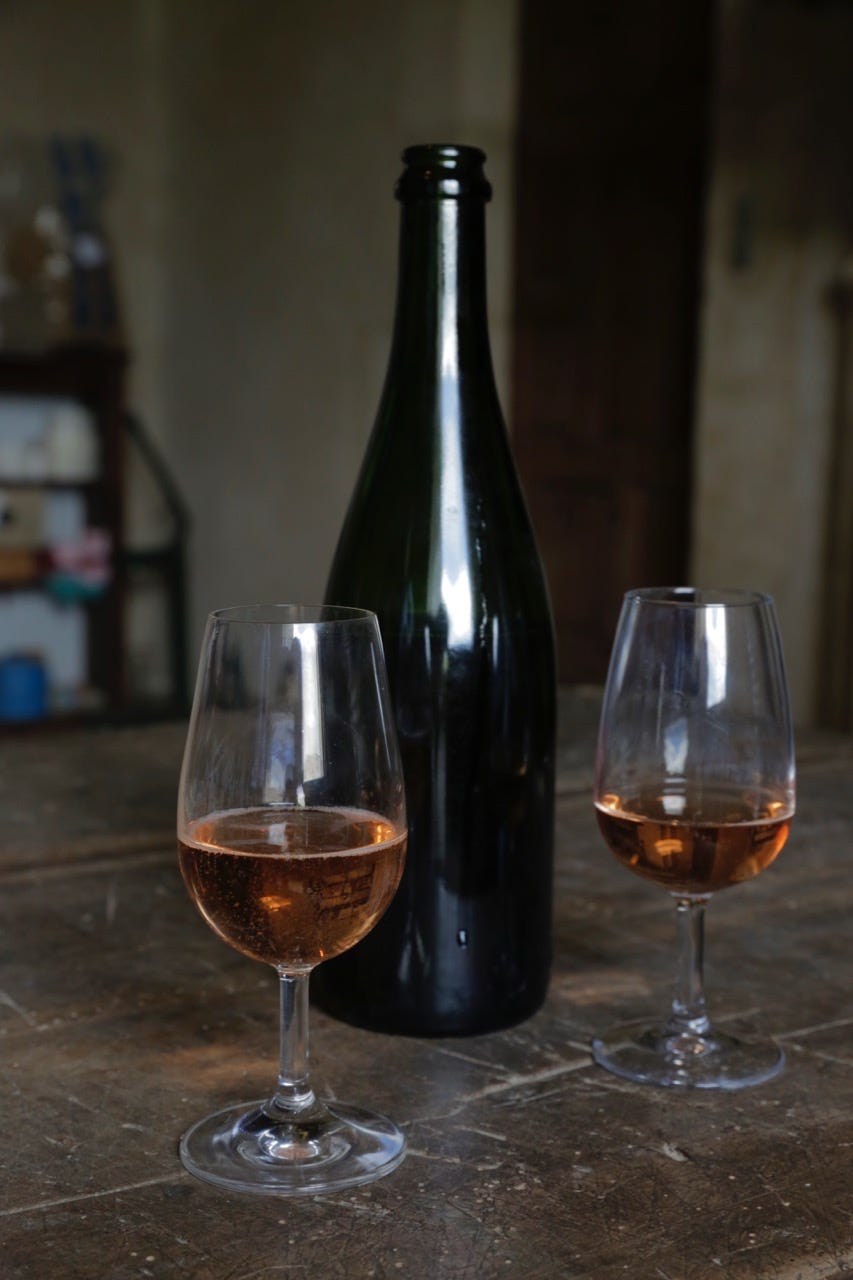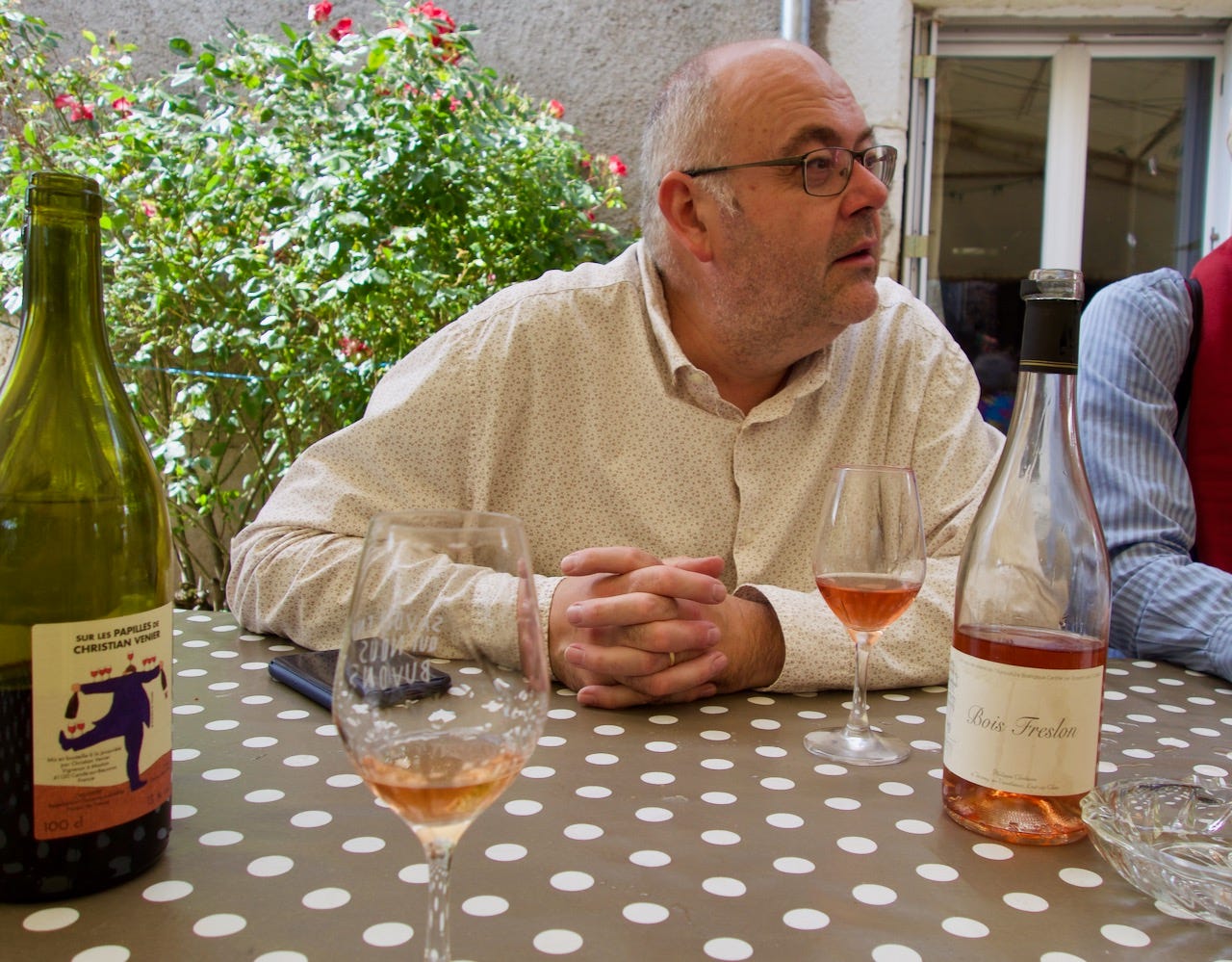CENTRE-LOIRE - Philippe Chidaine, Ternay
Biodynamically-farmed, unfiltered, low-sulfite pineau d'aunis from the family château.
All I told the Native Companion and my natural wine journalist colleague Bert Celce of Wine Terroirs, as we set out on Saturday to visit Centre-Loire vigneron Philippe Chidaine, was they shouldn't expect to encounter an archetypal vigneron character, broad of shoulder and long of beard. Clean-shaven and bespectacled, Philippe Chidaine lives mostly in Paris, where he's winding down a career in management consulting. On the weekends he tends a small family parcel of pineau d'aunis vines biodynamically.
Since learning of his work in 2015 from the veteran Paris dégustateur and occasional caviste Franck Carré, I've purchased Chidaine's wines for a series of restaurants where I've worked or consulted. I'd encounter him on the occasion of wine deliveries, when he'd arrive in a suit, removing cases from the trunk of a sedan, a conspicuously refined delivery guy.
Saturday we were bemused to discover that his address in Ternay is a well-manicured 15th-century manoir, or a small château.
Chidaine indicated the former chapel space, and turret through which the courtyard could be defended. "In the archives here, we found vines mentioned in the 16th century," he explained as we walked to his parcels. "It's normal. If you have a château, you need wine. It's inconceivable otherwise."
Chidaine's grandfather produced a vin gris, three barrels for the family and the staff. Chidaine's father scaled up, increasing plantings and installing chemical agriculture. The latter decided to quit in 1995, having run into trouble selling his production of high-yield vin gris, and that is when Chidaine took responsibility for the wine production.
"I did a year or two of chemical products and then I said no it's no longer possible," he recalls. "There was no more noise, there was no more insects. And the color it takes, the soils with Round-Up. It’s monstrous. The earth dries up. I said, 'What am I doing here?'"
Chidaine cites an article by the French journalist Julien Fouin in Santé Magazine as his initial inspiration for exploring organics. The article featured a profile of Nicolas Joly, among others. Chidaine rang him up, and soon found himself attending Joly's circuit of biodynamic conferences, meeting figures like Anjou vigneron Mark Angeli, Champagne vigneron David Léclapart, and late Burgundy vigneron Anne-Claude Leflaive.
"My father said to me [about organics]:'It doesn't exist, you have to be modern," says Chidaine. "And I said, look, there are great winemakers who avoid using phytosanitary products."
Until 2017, Chidaine farmed just 0.5ha of pineau d'aunis vines, many over a hundred years old. Since then, he's made new plantings, expanding his vineyard surface to 2.5ha, much of which should begin showing fruit this year.
The vines are all situated in an infertile, flint-soiled lieu-dit entitled "Le Bois Freslon," which is bordered on three sides by the eponymous woods, and which lends its name to his wines. Among Chidaine's chief viticultural challenges in recent years has been deterring the local deer.
"Last year makes two years that I've lost half the harvest in the bellies of the deer," he says, pointing out the electric fencing he put in this year.
The only wine Chidaine produces in any quantity - for now - is his red vin de France, "Bois Freslon." It sees whole-cluster, carbonic macerations in small fibreglass and steel tanks; the length of maceration depends greatly on the vintage, anywhere from just over a week in 2013, to 3-5 weeks, depending on the tank, in 2015. The wine is pressed with an old wooden vertical press. Elevage occurs in fibreglass and steel. The wine is not filtered or fined, and unsulfited save for 2mg / litre at bottling. The 2013 vintage, tasted in 2015, remains the greatest pineau d'aunis I've ever tasted, marrying the juiciness and acidity of the grape's more glouglou iteration with a complexity and length more common to nebbiolo.
When it comes to vinification and élevage, Chidaine has the admirable patience of someone whose income is not dependent upon wine. I would have to wait two years before he released, simultaneously, the 2014 and 2015 wines. Displeased with the volatility of his wine from 2014 (a drosophile suzuki year), he decided to wait and blend in 25% of the weightier 2015 wine, and vice versa, thus giving some pep to the wine from the warmer vintage.
The 2014 was a slender, fragile wine, somewhat touch-and-go. Chidaine remains particularly proud of the 2015, another bottle of which he opened for us on Saturday, along with one of the last remaining bottles of 2013. Where the bottle of 2013 had begun to fade, however, the 2015 was singing, showing persistence, graceful tannins, and a characteristic accord of mulling spice and dried rose.
"I can't do much better than that," says Chidaine.
The 2017, bottled in October, is a smaller wine, though scarcely less personable: brisk, spiced, with a crisp tannic finish that can be expected to unkink in the coming months. Chidaine attributes the vintage character to an "enormous" rainfall just before harvest. "We were at 12.5° potential, and woop, it falls to 11.5°."
Chidaine expresses a charmingly anachronistic disappointment at arriving at a low-alcohol wine. Similarly, he chooses to add a light dosage to a micro-cuvée méthode traditionnelle sparkler he produces, averring that he and his family find zero-dosage wines too rigid. The resulting wine is balanced, aromatic, and delicious - but it finds few takers among his circle of Parisian professional clients, who understandably find it hard to sell sparkling vin de France that is not pétillant-naturel these days.
From the same 2015 crop, Chidaine produced an even more micro cuvée of unfiltered rosé. Before opening it, he began to apologize for the fact that it contains a lot of CO2, at which point I couldn't help exclaiming that that is precisely the profile that I adore and can rarely find: unfiltered, unfined rosés, ones that haven't had malo blocked, ones that effervesce just slightly in their wholesome exuberance. Here, too, Chidaine takes the market-indifferent step of a light sulfitage at pressing.
"I noticed that during the alcoholic fermentation there’s a stripping - in the vinification sense of the term - of the SO2 by the CO2," he says. "In any case, there's never an excess of sulfites to break one's head."
It is, perversely, a difficult sell in today's natural wine market: a natural rosé which is in a key way more natural than most natural rosés (most of which see filtration), except the one way in which it is slightly less natural. I found the wine marvelous, saline and thirst-quenching, not an easy feat for a four-year-old rosé.
In a curious coincidence, I ran into none other than Franck Carré later that afternoon, at the portes ouvertes event of Cheverny winemaker Christian Venier. We opened some of the bottles I'd just purchased from Chidaine.
Chidaine produced just 300 bottles of this wine, although with the new plantations coming into production, we can perhaps hope for more vin gris in the future. He also hopes to plant some chenin someday, but in an adjacent area within the Côteaux-du-Vendômois AOC zone, because it is somewhat warmer, protected from the north wind.
He relates how his grandfather had a lone row of chenin, among forty rows of vines. That row never ripened in his lifetime.
"With chenin here, we’re at the extreme limit of the north," Chidaine observes, adding, "As long as the climate doesn't change."
Philippe Chidaine
Le Bois Freslon
41800 TERNAY
FURTHER READING
My 2015 post on Philippe Chidaine's 2013 "Bois Freslon"
A diverting article in Le Figaro Propriétés about how to tell the difference between a château and a manoir.



